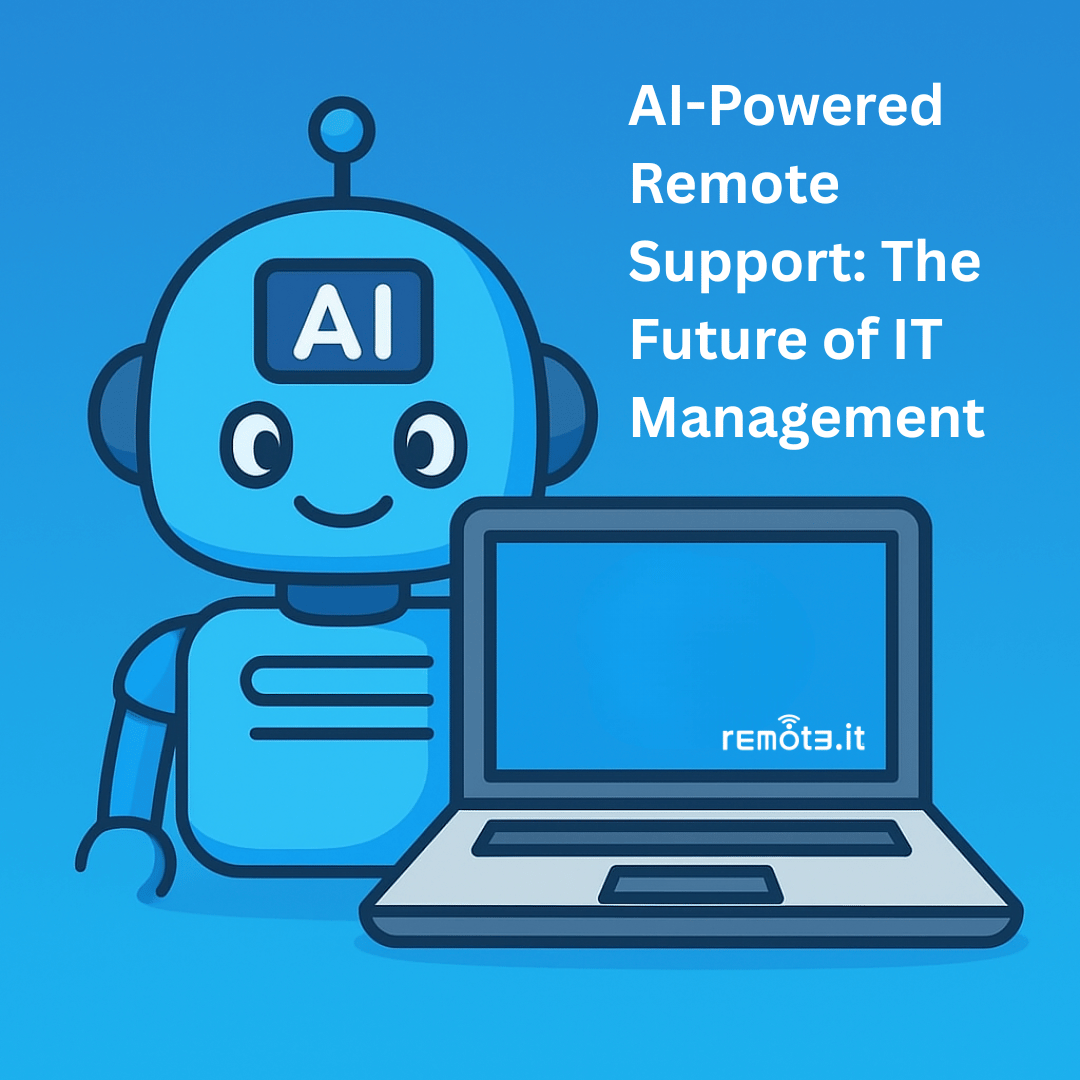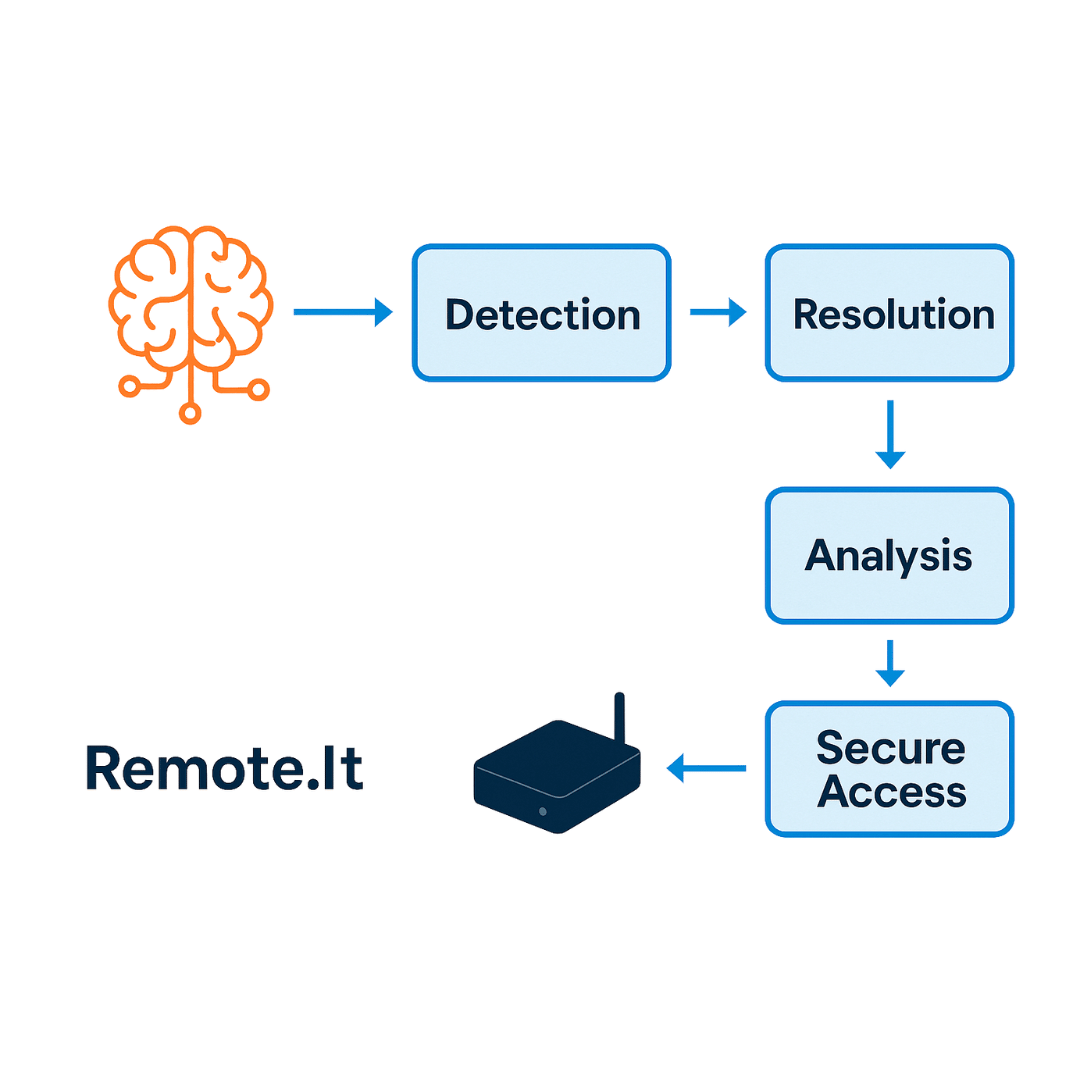
We believe in securely connecting everything by enabling users to build private networks within the internet that only they can see. We provide zero trust IT/OT networking as a service.
Language
English
日本

IT environments no longer confine themselves to a single office or data center. From global hybrid workforces to IoT deployments at the edge, devices and systems exist everywhere. Supporting them has become a mission-critical challenge for IT teams.
Traditional approaches (manual troubleshooting, VPN connections, and on-site visits) are slow, costly, and increasingly impractical. Enter artificial intelligence (AI), which transforms remote support from a reactive necessity into a proactive, automated, and secure process.
Historically, remote support meant connecting into a network via VPN, navigating firewall rules, and manually resolving issues. This approach came with three key drawbacks:
Cloud-based tools like Remote.It have already changed operations, enabling secure, service-level access without open ports or static IPs. AI takes this a step further, shifting IT operations from reactive firefighting to intelligent, preemptive management.

AI continuously scans device logs, performance metrics, and network activity. When AI detects a deviation from normal patterns (like CPU spikes, memory leaks, or connection drops), the system flags the issue instantly and provides probable root causes.
Example: A Remote.It-connected industrial sensor shows rising packet loss over 24 hours. An AI model spots the trend, alerts the IT team, and recommends a firmware update before failure occurs.
Instead of waiting for hardware or software to fail, AI models forecast potential issues using historical data. This predictive capability lets teams fix problems before they disrupt operations.
Example: A cluster of Remote.It-connected kiosks in retail locations show a 10% increase in CPU temperature over two weeks. AI predicts a cooling fan failure and schedules a maintenance window.
AI analyzes incoming support requests, classifies them, and instantly routes them to the most qualified technician. This reduces hand-offs and improves first-time resolution rates.
Example: A Remote.It customer submits a ticket about a service outage. AI parses the logs, identifies the cause as a firewall configuration, and assigns the ticket to a network specialist.
The most advanced AI-driven systems don’t flag problems; they fix them automatically. When you integrate AI workflows with Remote.It’s API, certain issues resolve without human intervention.
Example: A remote device’s SSH service stops responding. AI detects the outage, triggers a Remote.It API call to restart the service, and confirms functionality with no IT admin required.
When you combine these benefits with Remote.It’s zero trust architecture, they scale across thousands of devices, locations, and users.
AI acts on what it securely reaches. Remote.It enables this by:
This makes AI diagnosis, prediction, and issue resolution secure, whether restarting services, updating configurations, or rerouting traffic.
We’re heading toward a world where AI and secure remote access merge into “NoOps” environments: systems managing themselves. Expect to see:
In this future, IT teams will focus more on strategy and less on manual intervention.
AI-powered remote support is not a distant vision; it’s already taking shape. For IT teams and businesses, the combination of automation, security, and proactive management creates a competitive advantage.
Remote.It provides the secure, scalable foundation AI needs to deliver on this promise. Whether you’re managing a handful of critical servers or a global fleet of IoT devices, AI + Remote.It helps you stay ahead of issues, cut costs, and maximize uptime.